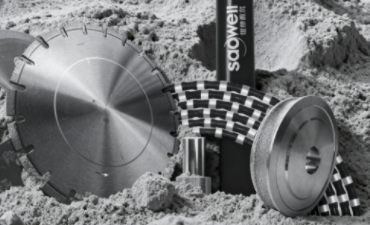Pre-alloyed powders have become a staple matrix material in today’s sintered diamond tool market—but how did this essential material gain its prominence? Let’s trace its developmental journey.
Throughout the 20th century, the diamond tool industry experienced steady growth, driving processing companies to demand better tool performance. Meanwhile, tool manufacturers were under constant pressure to keep costs in check. In this context, traditional matrix materials—primarily made by mechanically blending elemental metal powders—could no longer meet the standards for producing high-performance diamond tools.
To address this gap and create superior diamond tools, material manufacturers began exploring innovative solutions in the mid-1990s. Belgium-based Unicore led the way by introducing the concept of using ultra-fine pre-alloyed powders in diamond tools.
By 1998, the company had successfully scaled up the application of these powders in tool production, marking a shift away from traditional mechanically mixed powders. Around 2000, Sagwell also joined this advancement, independently developing metal powder materials such as micro-nano ultra-fine iron powders and ultra-fine pre-alloyed powders.
By definition, pre-alloyed powder is a type of metal powder composed of two or more elements. It undergoes alloying during the powder manufacturing process, ensuring every particle has a composition that matches the nominal specification.

Since the concept emerged in the 1990s, researchers worldwide have conducted extensive, in-depth studies on pre-alloyed powders, uncovering several key advantages:
Uniform element distribution:
Unlike mechanically mixed powders, pre-alloyed powders feature evenly distributed elements. This eliminates composition segregation at the source and guarantees a consistent matrix structure.
Enhanced matrix performance:
Pre-alloyed powders undergo partial alloying during production, resulting in a final matrix with higher hardness and impact strength. This, in turn, strengthens the matrix’s ability to hold diamond particles securely.
Improved sintering efficiency:
Pre-alloying significantly lowers the activation energy required for metal atom diffusion during sintering. This enables lower sintering temperatures and shorter sintering times—benefits that reduce thermal damage to diamonds, cut electrical energy and graphite mold consumption, and boost overall production economy.
In the early stages of ultra-fine pre-alloyed powder development, production relied mainly on conventional atomization processes. This method produced powders with high alloying levels, good fluidity, high production efficiency, and relatively low costs. However, the powders generated by conventional atomization were generally coarse, which limited further improvements in matrix performance.
To overcome this drawback and fully leverage the unique benefits of ultra-fine powders, Sagwell developed and adopted a new chemical powder-manufacturing technology. This innovation has since been applied to produce ultra-fine and nano-scale pre-alloyed powders, propelling diamond tool matrix materials toward higher performance standards.
Please feel free to consult for more details.
Email: [email protected]



